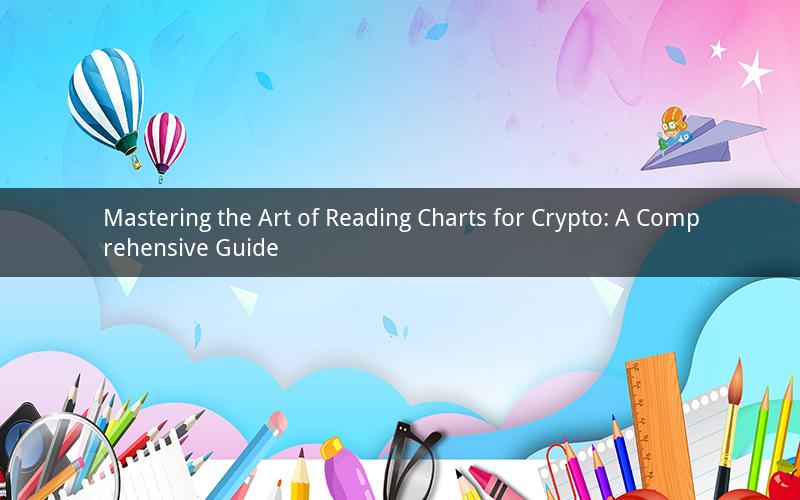
Introduction:
Understanding how to read charts for crypto is crucial for anyone looking to navigate the volatile world of cryptocurrencies. Whether you're a beginner or a seasoned investor, being able to interpret charts effectively can make a significant difference in your trading decisions. In this guide, we'll explore the key elements of chart analysis, popular chart types, and provide practical tips to help you read charts like a pro.
1. Understanding Chart Types
a. Line Charts: Line charts are the most basic type of chart, showing the price of a cryptocurrency over a specific period. They are ideal for identifying trends and patterns.
b. Bar Charts: Bar charts provide more information than line charts, displaying open, high, low, and close prices for a given period. This allows for a better understanding of price volatility.
c. Candlestick Charts: Candlestick charts are similar to bar charts but offer a more visually appealing representation of price movements. They include a body, which represents the opening and closing prices, and wicks, which show the highest and lowest prices.
d. OHLC (Open, High, Low, Close) Charts: OHLC charts are a type of bar chart that displays the same information as candlestick charts but in a different format.
2. Key Chart Elements
a. Time Frame: The time frame of a chart refers to the duration of data displayed. Common time frames include 1-minute, 5-minute, 15-minute, 30-minute, 1-hour, 4-hour, 1-day, and 1-week.
b. Price: The price is the most important element of a chart, representing the value of a cryptocurrency at a specific point in time.
c. Volume: Volume indicates the number of units of a cryptocurrency traded within a given time frame. High volume often indicates strong interest in a particular cryptocurrency.
d. Support and Resistance: Support and resistance levels are price levels where the market tends to reverse its direction. They are crucial for identifying potential entry and exit points.
3. Technical Analysis Techniques
a. Trend Analysis: Trend analysis involves identifying the direction in which the price of a cryptocurrency is moving. Uptrends, downtrends, and sideways trends are the three main types of trends.
b. Patterns: Chart patterns are formations that occur on a chart and can indicate future price movements. Common patterns include head and shoulders, triangles, and flags.
c. Indicators: Technical indicators are mathematical tools used to analyze historical price data and predict future price movements. Popular indicators include moving averages, RSI (Relative Strength Index), and MACD (Moving Average Convergence Divergence).
4. Reading Charts for Crypto
a. Identifying Trends: To read charts for crypto, start by identifying the overall trend. Look for patterns that indicate whether the price is moving up, down, or sideways.
b. Analyzing Patterns: Once you've identified the trend, analyze chart patterns to predict potential price movements. Look for patterns that align with the current trend.
c. Using Indicators: Combine indicators with your analysis to gain additional insights. For example, if the price is moving up and the RSI is above 70, it may indicate overbought conditions.
5. Common Mistakes to Avoid
a. Emotional Decision-Making: Avoid making impulsive decisions based on emotions. Stick to your analysis and trading plan.
b. Overtrading: Don't trade too frequently, as this can lead to increased transaction costs and reduced profitability.
c. Ignoring Risk Management: Always use risk management strategies to protect your investments.
6. Conclusion
Reading charts for crypto requires practice and a solid understanding of technical analysis. By familiarizing yourself with chart types, key elements, and analysis techniques, you'll be better equipped to make informed trading decisions. Remember to avoid common mistakes and stay disciplined in your approach.
Frequently Asked Questions:
1. What is the best time frame for reading crypto charts?
Answer: The best time frame depends on your trading style. Short-term traders may prefer 1-minute or 5-minute charts, while long-term investors might opt for 1-hour or 1-day charts.
2. How can I identify support and resistance levels on a chart?
Answer: Support and resistance levels can be identified by looking for price levels where the market has repeatedly reversed its direction. These levels can be marked on the chart and used as potential entry and exit points.
3. What are the most popular technical indicators for crypto trading?
Answer: Some of the most popular technical indicators for crypto trading include moving averages, RSI, MACD, Bollinger Bands, and Fibonacci retracement levels.
4. How can I avoid making emotional trading decisions?
Answer: To avoid emotional trading decisions, create a trading plan and stick to it. Set stop-loss and take-profit levels to minimize potential losses and protect your investments.
5. Is it possible to become a successful crypto trader without reading charts?
Answer: While it's possible to make money in the crypto market without reading charts, being able to interpret charts effectively can significantly improve your chances of success. Charts provide valuable insights into market trends and potential price movements.